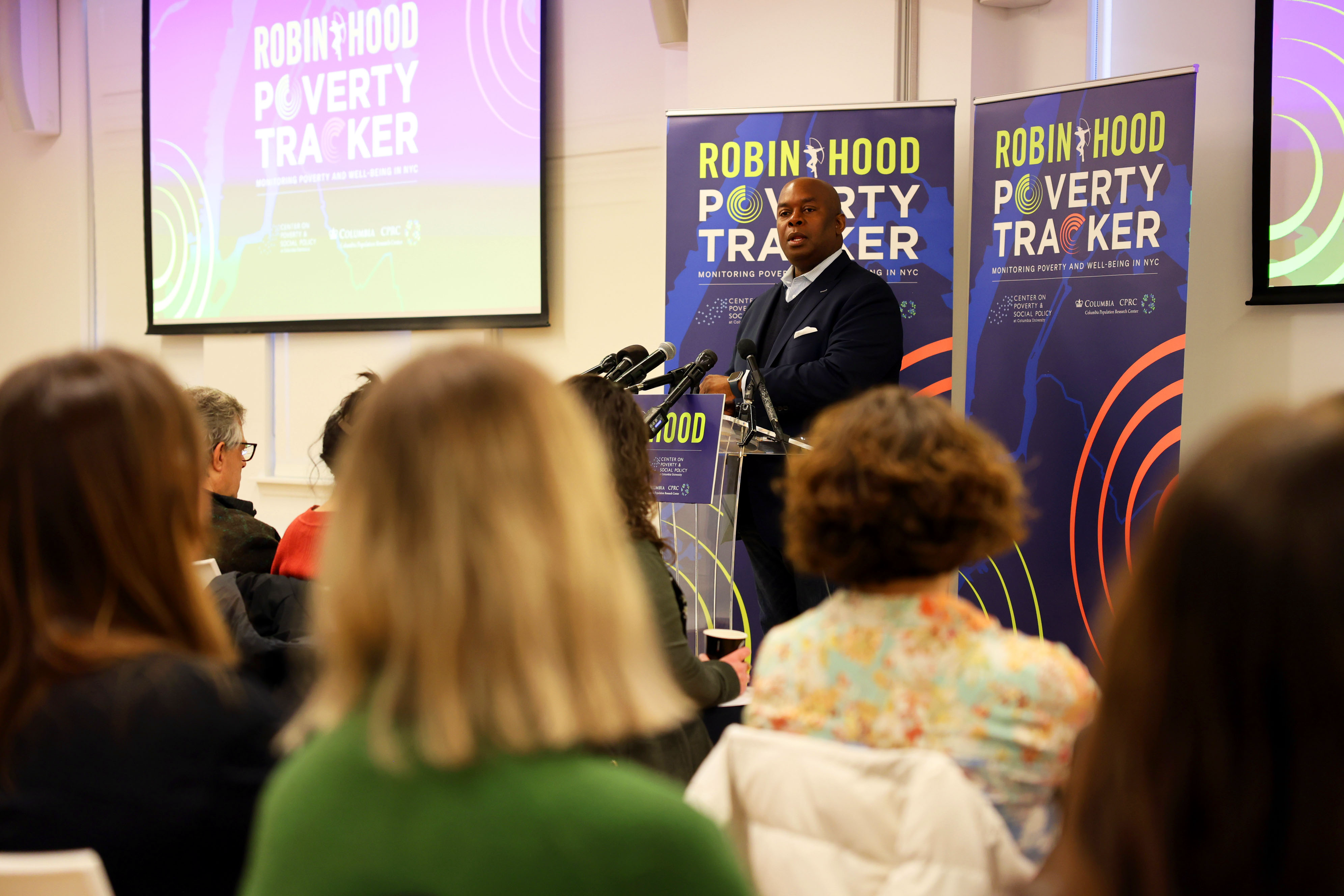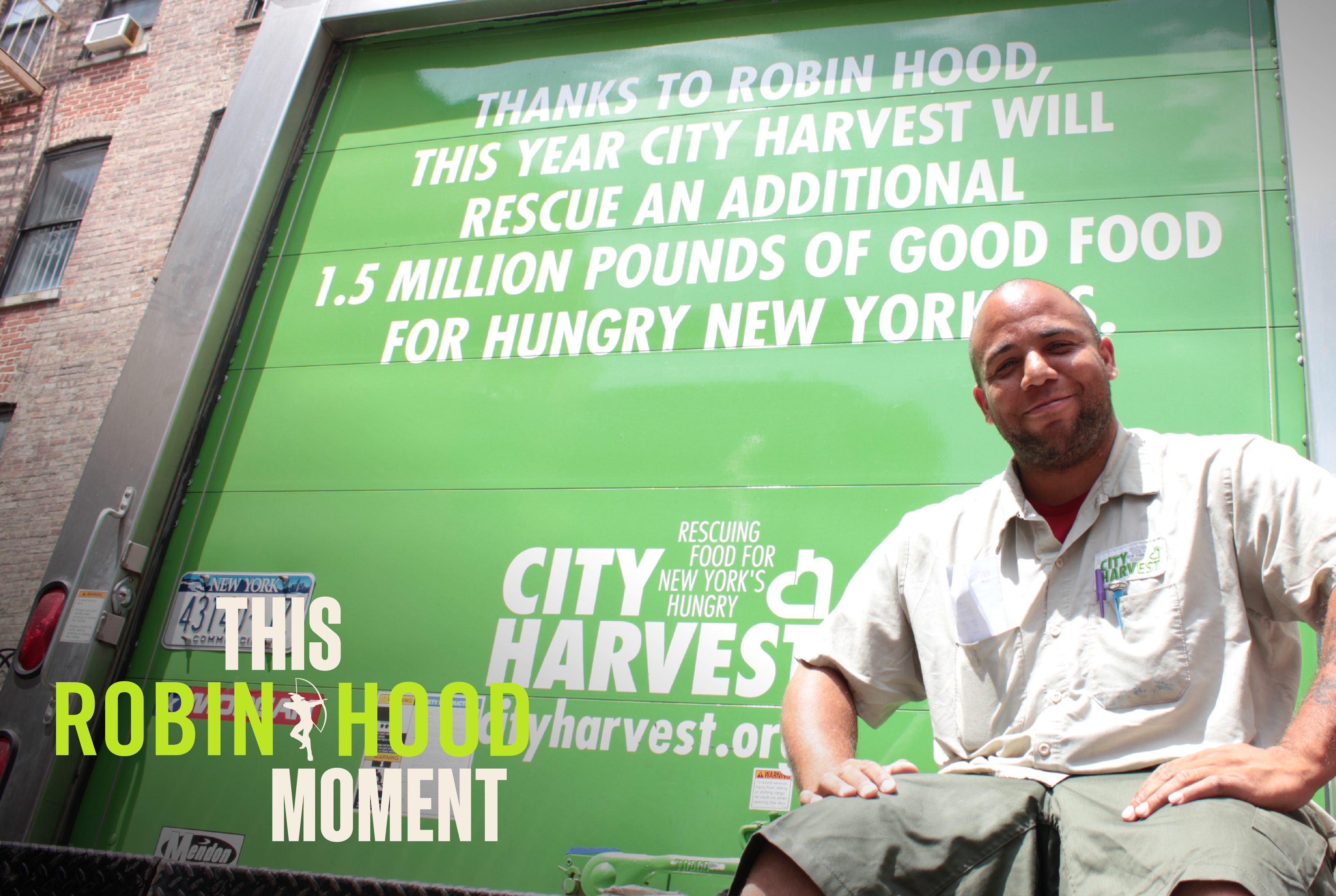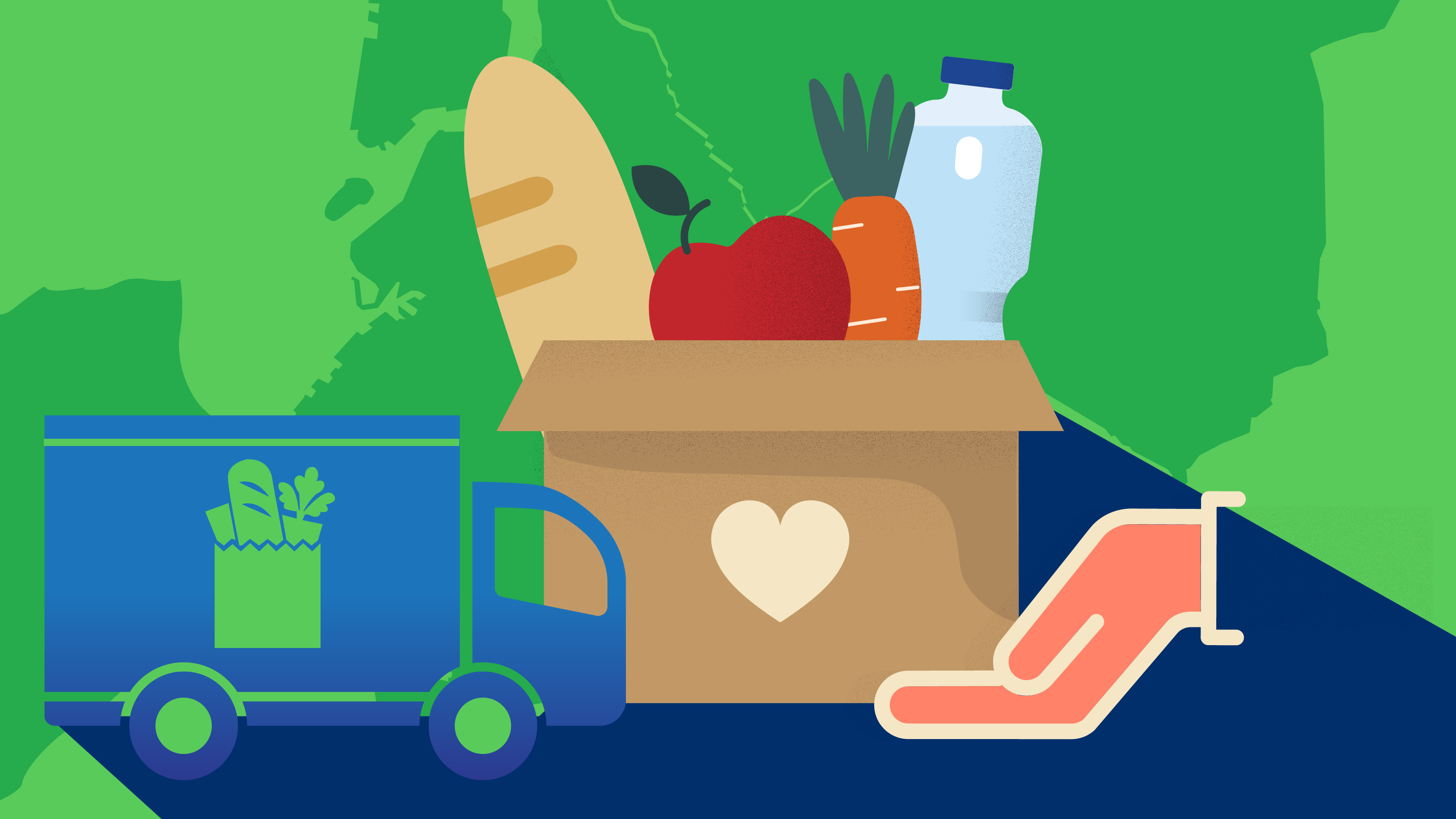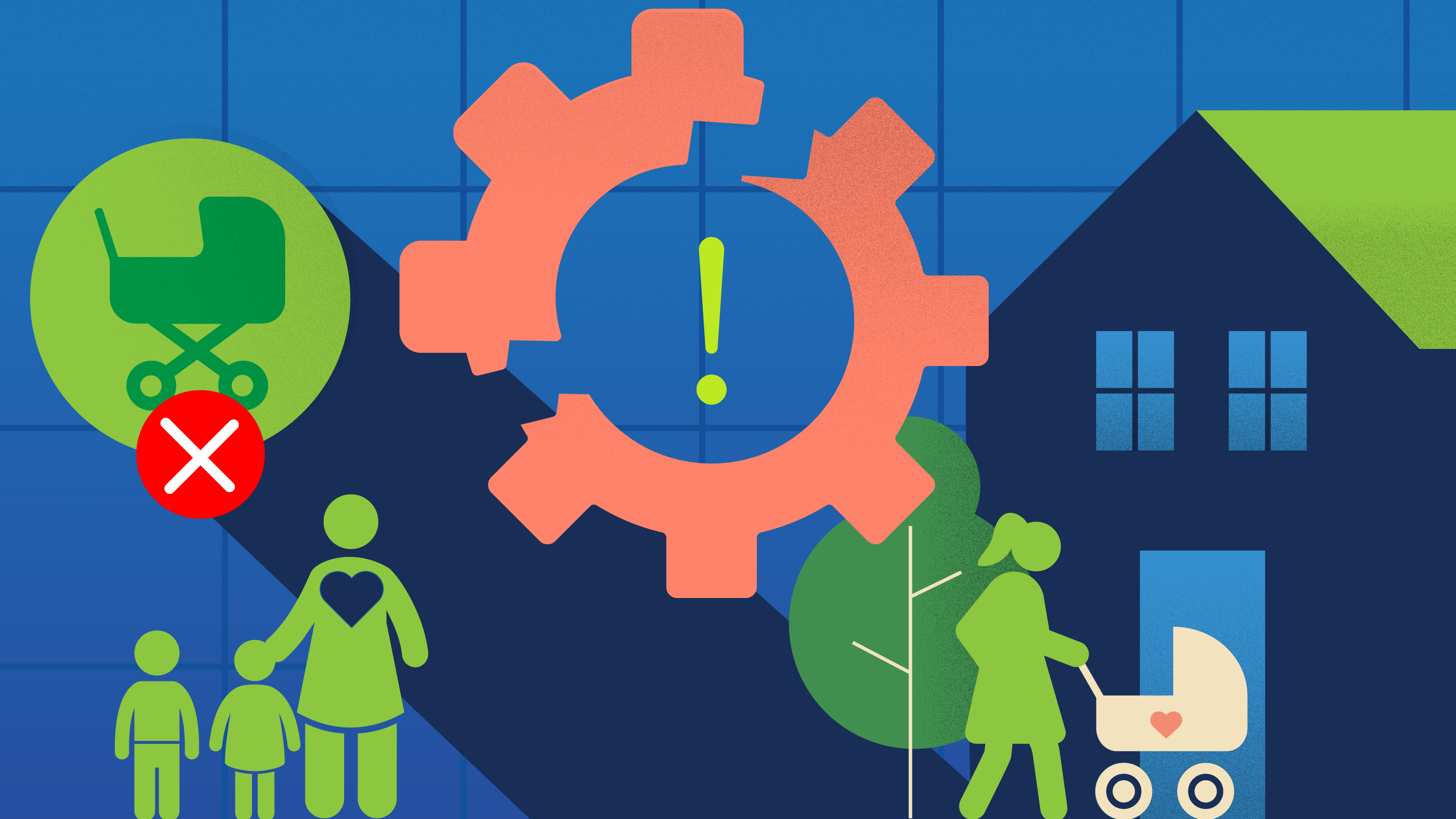Nov 19, 2021
Building a Secure, Successful and Sustainable Emergency Food System for NYC
By Brandon Martin, Program Officer | Adults and Household Support and Nancy Park, Senior Program Officer | Adults and Household Supports and Raj Borsellino, Senior Program Officer | Adults and Household Supports
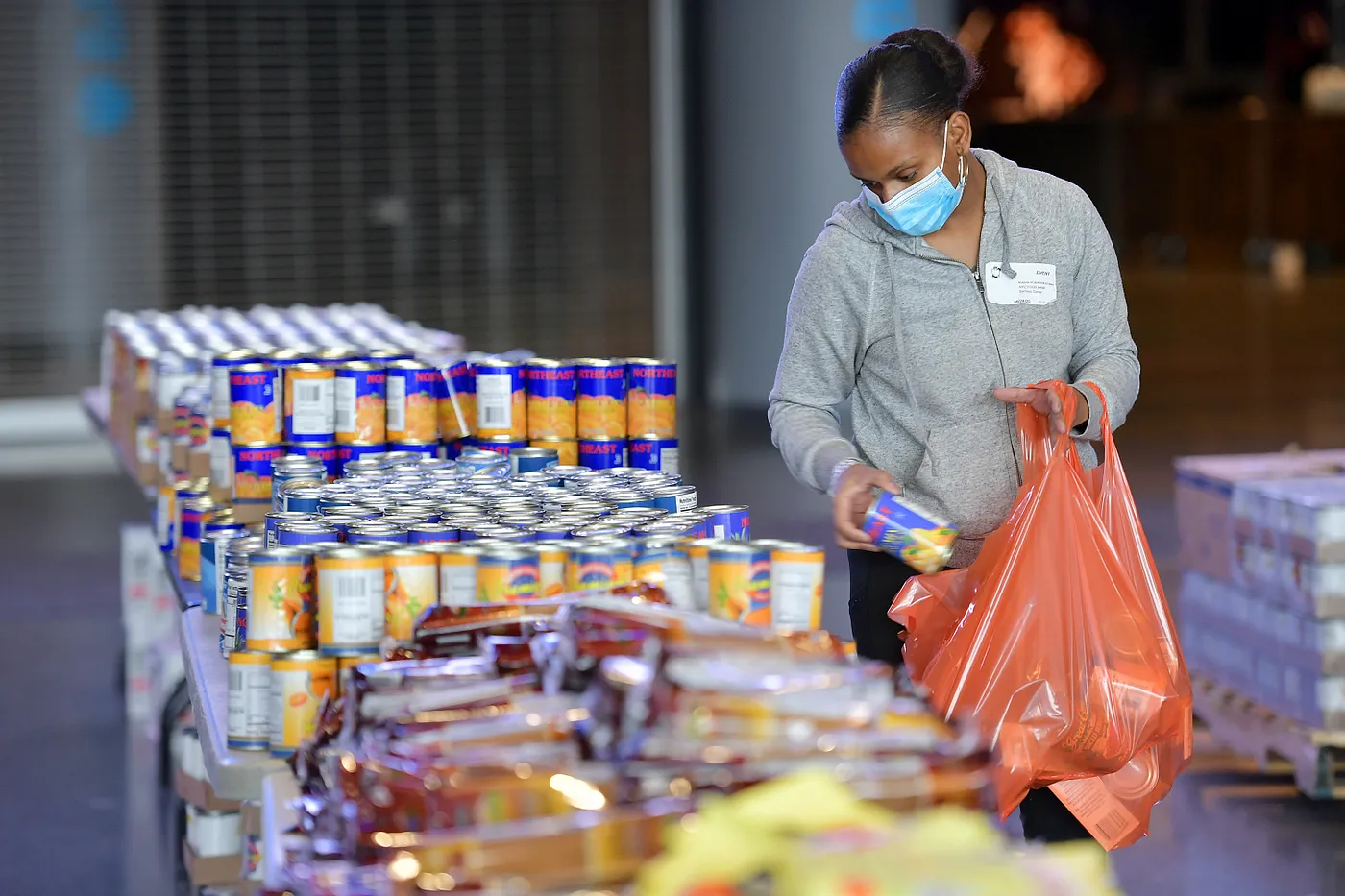
A volunteer packs bags for emergency food distribution during the COVID-19 pandemic.
A year ago, we reported on the enormous challenges facing the emergency food system in New York City. Food pantry usage had risen 250% over the previous year, with most pantries stretching far beyond their intended capacity and many being forced to temporarily shut down. And communities of color had been hit hardest, with more than half of all Black and Hispanic New Yorkers having experienced food hardship in the prior year.
We now have a more full picture of the ways in which the emergency food system has been put to the test over the past year and a half. A new report from Poverty Tracker, a long-term study by Robin Hood and Columbia University, confirmed that pantry usage had reached new heights:
28
%
of New Yorkers received emergency food assistance in 2020, up from 13% pre-pandemic.
58
%
of New Yorkers who visited pantries were going multiple times per month, up from 34% pre-pandemic.
32
%
of immigrant New Yorkers received emergency food, up from 11% pre-pandemic.
There’s some promising news in the report, though, about what worked.
Counter to expectations, the share of New Yorkers facing food hardship (defined as running out of food or worrying that food will run out) did not rise significantly between 2019 and 2020: it saw only a slight increase, from 37% to 39%.
That’s because food pantries and policymakers stepped up more than ever before. The City of New York launched the Pandemic Food Reserve Emergency Distribution (P-FRED) program, which brought millions of pounds of fresh and shelf-stable food into the city. New York State launched Nourish New York, which connected rural farmers with excess food to food banks throughout the state. The federal government increased Supplemental Nutrition Assistance Program (SNAP) benefits by more than 15%. And emergency relief funds, including the Robin Hood Relief Fund, distributed tens of millions of dollars to food programs across the city. Engaging with policymakers and shoring up these nonprofit organizations while increasing food access will be key to keep feeding New Yorkers through the pandemic recovery, a period that could last for years.
So Robin Hood is investing in innovative ways to build on these efforts and increase the reach of emergency food services to help ensure that far fewer New Yorkers are burdened with food hardship.
We’re partnering with the Mayor’s Office of Food Policy (MOFP), which, along with Redstone Strategy Group, will roll out a neighborhood-centered program in areas that experience high supply gaps. Beginning in the Soundview neighborhood in the Bronx and the Flatlands neighborhood in Brooklyn, this model will prioritize convenience by setting up food pickup sites at trusted community organizations, from houses of worship to childcare centers and medical clinics.
The program will work to reduce the barriers people face when trying to access food, from stigma to difficulty physically accessing sites to the experience itself being unpleasant or challenging to navigate. An app called Plentiful will let clients reserve orders at food pantries and set up pickup times that work for them. If the first phase of the project goes well, we hope this model can gradually be expanded citywide to support New York City’s Emergency Food Assistance Program, which provides tens of millions of dollars annually.
Food pantries will continue to play an important role in this ecosystem, and Robin Hood will remain focused on supporting their work. Nontraditional models like bargain grocery stores, a hybrid between a food pantry and a traditional retail store, hold the potential to reimagine the food shopping experience. Similarly, community fridges will play a key role. Hundreds of them have popped up in communities across the city, run by volunteers who keep them clean and stocked with food as a form of mutual aid that meets people where they are.
Robin Hood’s mission is to make sure that New York City’s emergency food system is secure, successful and sustainable for the long term. Of course, supporting emergency food providers will be a key component of our strategy. But we’re excited, too, to harness the power of policymakers to help end the root cause of food hardship: poverty.
